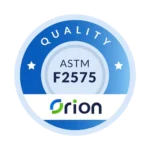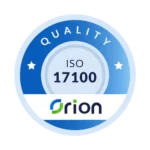- Home
- /
- Blog
- /
- Interpreting Services
- /
- What You Need to...
What You Need to Know about Interpreting Services
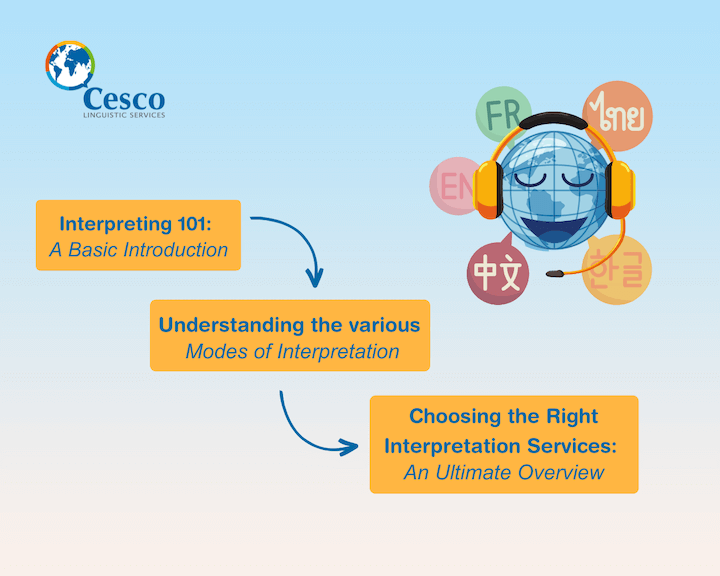
Are you interested in learning about interpreting services and how they facilitate effective communication between individuals and groups who speak different languages? If so, you’ve come to the right place!
This post will provide a comprehensive overview of the interpreting industry and what you need to know about this fascinating field.
Whether you’re a business professional looking to expand your global reach, a medical practitioner seeking to serve diverse patients, a lawyer who serves non or limited English-speaking clients, or just interested in learning more about interpreting this blog post is for you.
So let’s dive in together and explore the different modes and modalities of interpreting, how they work, and when to use them. Exciting, right?
Interpretation 101: A Basic Introduction
Let’s start with the basics. Interpretation is like a complex puzzle, where the interpreter has to take the pieces of one language and recreate them into another.
It’s not just about words but also cultural nuances and expressions that might not directly translate. And let’s remember that personal biases can sometimes sneak in.
It’s like walking a tightrope while juggling flaming torches – not for the faint of heart!
Fun Fact: Completing an interpreting job requires at least 20 cognitive skills simultaneously. It’s truly mind-boggling how much mental agility and expertise are needed to be an effective interpreter.
Modes of Interpretation
A specific interpretation mode is designed to fit each situational need, from dialogue to monologue.
So, let’s take a closer look at some of the most commonly used interpretation services.
Consecutive Interpretation

Consecutive interpreting is straightforward and one of the most important and widely used modes of interpreting.
The process starts with the speaker delivering a message in their language of choice while the interpreter takes notes and listens attentively. Once the speaker has uttered an idea, or maybe a few sentences or paragraphs, the interpreter begins interpreting into the target language.
It’s like a well-choreographed dance between the speaker and the interpreter, ensuring everyone understands the message.
Ideal Usage: Consecutive interpretation is perfect for small groups or one-on-one conversations, like business meetings, witness testimony, interviews, medical consultations, diplomatic negotiations, and parent-teacher conferences.
One of the best things about this type of interpretation is that it doesn’t require special equipment like soundproof booths, headphones, or microphones. The interpreter may just need a pen and a notepad.
Simultaneous Interpretation
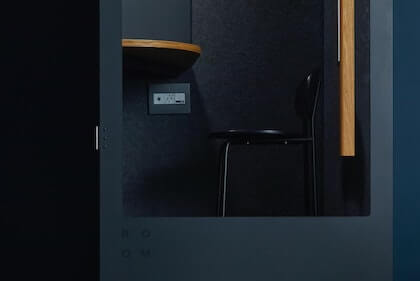
Simultaneous interpretation is one of the most impressive modes of interpretation. Can you imagine being able to interpret someone’s words in real-time as they are speaking? That’s what simultaneous interpretation is all about!
During a simultaneous interpretation, the interpreter may sit in a booth (think of an multilingual event or international conference) while they listen to the speaker and provide a real-time interpretation into another language.
In an international conference, the interpreter speaks through a microphone while delivering the interpretation to the audience who listens via headphones. It’s a pretty impressive feat; not everyone can pull it off!
Ideal Usage: This interpretation mode is perfect for large events like multilingual events, medical forums, courtrooms, and international conventions where many people speak different languages.
But, of course, it requires a high level of technical skill and strong communication and cultural awareness. An interpreter must understand the culture and language they are interpreting to ensure an accurate and culturally sensitive interpretation.
Whisper Interpretation

Whisper interpretation, or Chuchotage, as it’s sometimes known, is a fascinating interpretation modality.
As the name suggests, the interpreter whispers the translation to one or maybe two individuals. Whisper interpreting can be especially useful in quiet settings where other interpretation modalities might not be feasible.
One of the main benefits of whisper interpretation is that it allows for more discreet and tailored service.
By standing close to the listener, the interpreter can provide a more personalized experience while avoiding disrupting the speaker or the rest of the audience.
Ideal Usage: It is suitable for various settings, including guided tours, exhibitions, meetings, and conferences where only one attendee needs the interpreting services.
Fun fact: “Chuchotage” is a French word that means “whispering.” So, the next time you hear the term whispered interpretation, you can impress your friends by using the French term instead!
Telephone Interpretation
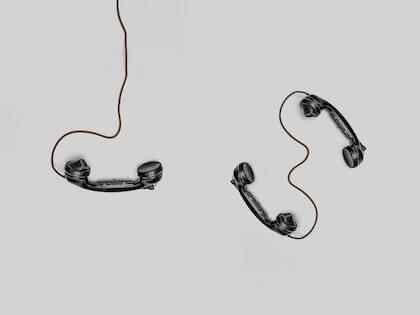
Are you in a situation where you need to connect with someone who speaks a different language, but you don’t have an interpreter nearby? Don’t worry! Telephone Interpretation has you covered!
It’s a quick, efficient, and hassle-free way to bridge the language gap, especially in emergencies or last-minute situations.
Here’s how it works: An interpreter listens to the speaker’s words through a telephone and provides an immediate oral translation to the listener. It’s like having a personal interpreter on your phone!
Ideal Usage: Telephone Interpretation is perfect for medical and other emergencies, where face-to-face communication is not possible, or for communication that would be typically carried out over the phone.
But that’s not all! It’s also useful for business meetings, legal proceedings, customer support, and many other situations where a unique language need or remote. location are barriers for other modalities.
Fun fact: Did you know that Telephone Interpretation was first introduced in the 1970s and has since revolutionized how people communicate across languages and cultures? Today, it’s a widely used and highly valued interpreting modality, thanks to the power of technology!
Video Remote Interpretation

Video Remote Interpreting (VRI) is an innovative communication solution and interpreting modality that utilizes video conferencing technology to connect people who speak different languages with a qualified interpreter in real-time.
One of the key advantages of VRI is its accessibility. With just a computer, tablet, or smartphone, users can connect with interpreters anytime, anywhere, and receive professional interpretation services on demand.
Ideal Usage: VRI is a perfect option for situations where onsite interpretation is impossible, such as remote or rural areas, or for unique languages not available locally.
It is an efficient and effective solution for cross-language communication, especially in urgent or time-sensitive situations, such as medical or other emergencies.
Fun fact: VRI was first introduced in the United States in the early 2000s to respond to the growing need for remote interpreting services in the healthcare industry.
Sign Language Interpretation

Sign language interpretation is not just about communication; it’s about inclusivity, equality, and breaking down barriers.
Have you ever wondered how deaf or hard-of-hearing individuals communicate with hearing individuals? Sign language interpretation is the answer!
This critical service is the bridge that connects the hearing and deaf communities. It allows everyone to access important information, services, and conversations and participate fully in society.
Signed languages are fully developed languages with complex grammar and broad vocabulary, not mere hand gestures and facial expressions. Sign language interpreters are highly skilled professionals with a deep understanding of the culture and language of their local deaf and hard-of-hearing communities.
They accurately convey the speaker’s tone, emotion, message, and intent.
Ideal Usage: Sign language interpretation is crucial in educational, medical, and public settings to ensure that deaf and hard-of-hearing individuals have equal access to information and services.
Fun Fact: Did you know that American Sign Language (ASL) is not universal? Over 300 different signed languages are used worldwide, each with unique grammar and vocabulary.
Thanks to sign language interpretation, we can create a world where everyone can access vital information and services, and no one is left behind.
How to Choose the Perfect Interpretation Service for Your Needs?
Are you planning to host a meeting or an event with attendees from diverse linguistic backgrounds?
If so, you must ensure everyone can understand and participate in the conversation.
But choosing the correct type of interpretation services can be daunting.
Here are some tips to help you choose the right interpretation service for your event:
Purpose
First, identify the purpose. Are you planning for a medical appointment, a formal conference, or a casual meeting? Knowing this can help you narrow down the options.
Audience size
Consider the size of your audience. Do you need interpretation for a small group or a large crowd? It will affect the type of interpretation services that will suit the setting.
Technical requirements
Evaluate the technical aspects of your event. Do you need soundproof booths, microphones, headphones, or other equipment? It is crucial to ensure that the interpretation is smooth and accurate.
Budget
Determine your budget for interpretation services. Costs and applicable minimums vary depending on the specialization, mode, and modality of interpretation, as well as the number of interpreters required.
Interpreter qualifications
Ensure that the interpreter has the required qualifications and experience for your event. Also, consider safety and privacy concerns.
Location
Finally, consider the location of your event. Will the interpreter be onsite, or can they provide remote services? It can affect costs and the mode of interpretation available.
Considering these factors, you can select the perfect interpretation service to meet your needs and facilitate effective communication.
Case Study: Language support for a tech start-up Expanding Globally
Conclusion
By following the key factors for choosing the suitable form, such as type of event, budget, audience size, technical requirements, interpreter qualification, and location, you can ensure that you effectively communicate with people worldwide, breaking language barriers and promoting diversity and inclusivity.
Whether attending a conference, meeting with a client, or navigating a medical emergency, interpretation services can fulfill your needs.
The possibilities are endless, from Onsite Interpretation to Video Remote Interpretation and from Consecutive Interpretation to Simultaneous conference interpretation!
Congratulations! You are now equipped with the knowledge to choose the correct interpretation service for any situation.
We hope you enjoyed learning about interpretation services as much as we enjoyed sharing our knowledge.
Remember, communication is the cornerstone of human interaction, and interpretation is the bridge that connects people of different cultures and language
 Cesco Linguistic Services was founded on August 4, 2004. Our passion is to facilitate Human-to-Human understanding in meaningful and rewarding ways through the power of language. We excel at providing expert & timely customized language solutions for organizations of all sizes. The name Cesco (pronounced “Chesco”) comes from the founder’s firstborn son Francesco, whose birth coincided with the year the company was founded.
Cesco Linguistic Services was founded on August 4, 2004. Our passion is to facilitate Human-to-Human understanding in meaningful and rewarding ways through the power of language. We excel at providing expert & timely customized language solutions for organizations of all sizes. The name Cesco (pronounced “Chesco”) comes from the founder’s firstborn son Francesco, whose birth coincided with the year the company was founded.






